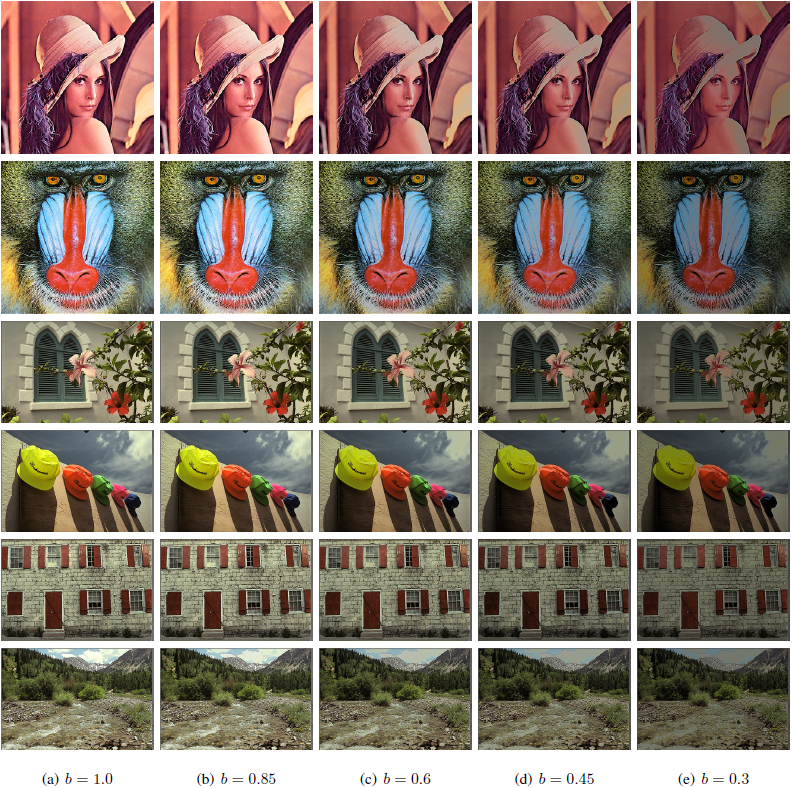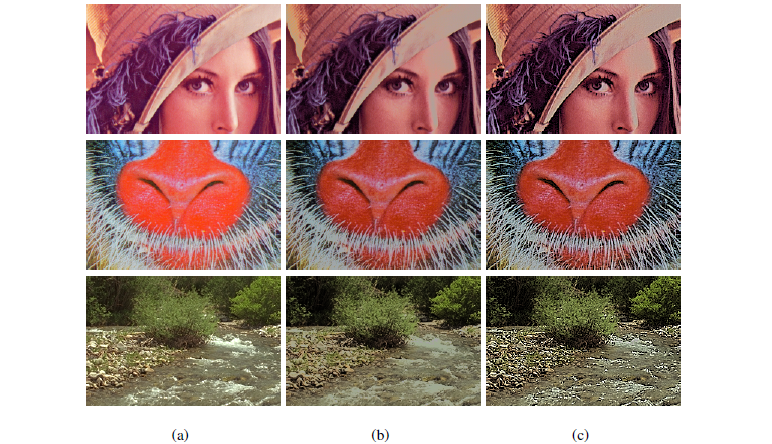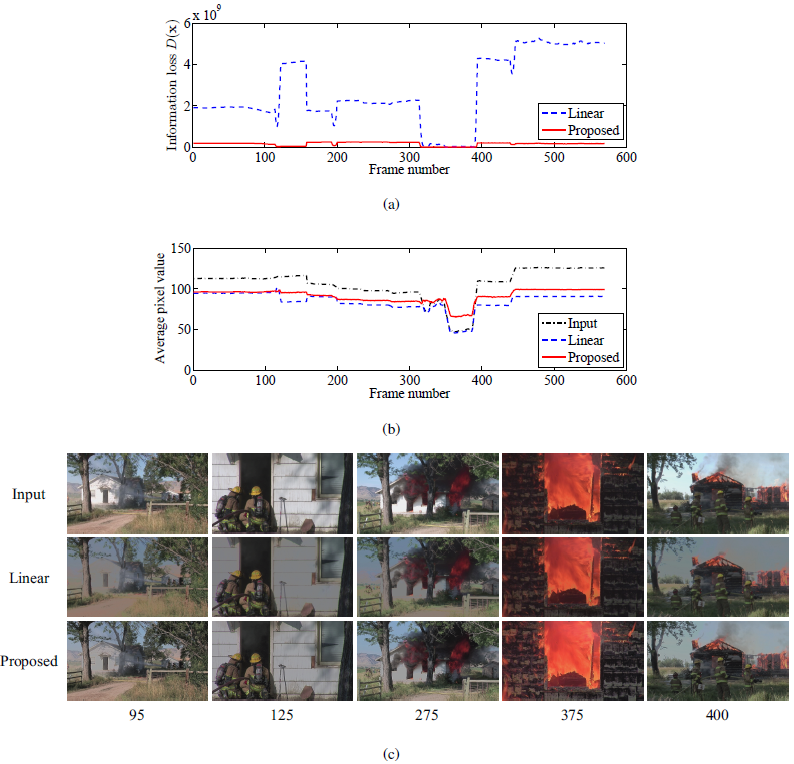Brightness-Compensated Contrast Enhancement
Abstract
An optimized brightness-compensated contrast enhancement (BCCE) algorithm for transmissive liquid crystal displays (LCDs) is proposed in this work. We first develop a global contrast enhancement scheme to compensate for the reduced brightness when the backlight of an LCD device is dimmed for power reduction.We also derive a distortion model to describe the information loss due to the brightness compensation. Then, we formulate an objective function that consists of the contrast enhancement term and the distortion term. By minimizing the objective function, we maximize the backlight-scaled image contrast, subject to the constraint on the distortion. Simulation results show that the proposed BCCE algorithm provides high image qualities, even when the backlight intensity is reduced by up to 50~70% to save power.
Experimental Results
 |
Fig. 4. Brightness-compensated contrast enhancement results on the “Lena,” “Baboon,” “Window,” “Hats,” “Building,” and “Stream” images at b = 0.5. The input images in (a) are compensated by the linear compensation method in (b), the Iranli et al.’s algorithm [17] in (c), the Tsai et al.’s algorithm [11] in (d), and the proposed algorithm at α = 0 and α = 0.5 in (e) and (f), respectively. For better evaluation of image qualities, we recommend the readers to see this figure on display devices rather than the printed version.
 |
Fig. 6. Mean subjective evaluation scores on (a) the local contrast and (b) the brightness preservation of the Iranli et al.’s algorithm [17], the Tsai et al.’s algorithm [11], and the proposed algorithm. The standard deviation of the subjective evaluation of each test is indicated by the error bar.
 |
Fig. 7. The result images of the proposed algorithm at various backlight dimming factors.
 |
Fig. 8. The effects of the global and local contrast enhancement schemes in the proposed algorithm at b = 0.5. Magnified parts of the input images in (a) and the result images after the global enhancement in (b) and the local enhancement in (c).
 |
Fig. 12. Video enhancement of the “Controlled Burn” sequence at b = 0.5: (a) the information loss D(x), (b) the average pixel values of input and output frames, and (c) selected frames.
Publications
Chul Lee, Jin-Hwan Kim, Chulwoo Lee, and Chang-Su Kim, “Optimized brightness compensation and contrast enhancement for transmissive liquid crystal displays,” IEEE Trans. Circuits and Systems for Video Technology, vol. 24, no. 4, pp. 576-590, Apr. 2014.
Chul Lee, Jin-Hwan Kim, Chulwoo Lee, and Chang-Su Kim, “Power-constrained backlight scaling and contrast enhancement for TFT-LCD displays,” in Proc. IEEE International Conference on Image Processing (ICIP), Orlando, Florida, Sep.-Oct. 2012, pp. 2793-2796.
Code